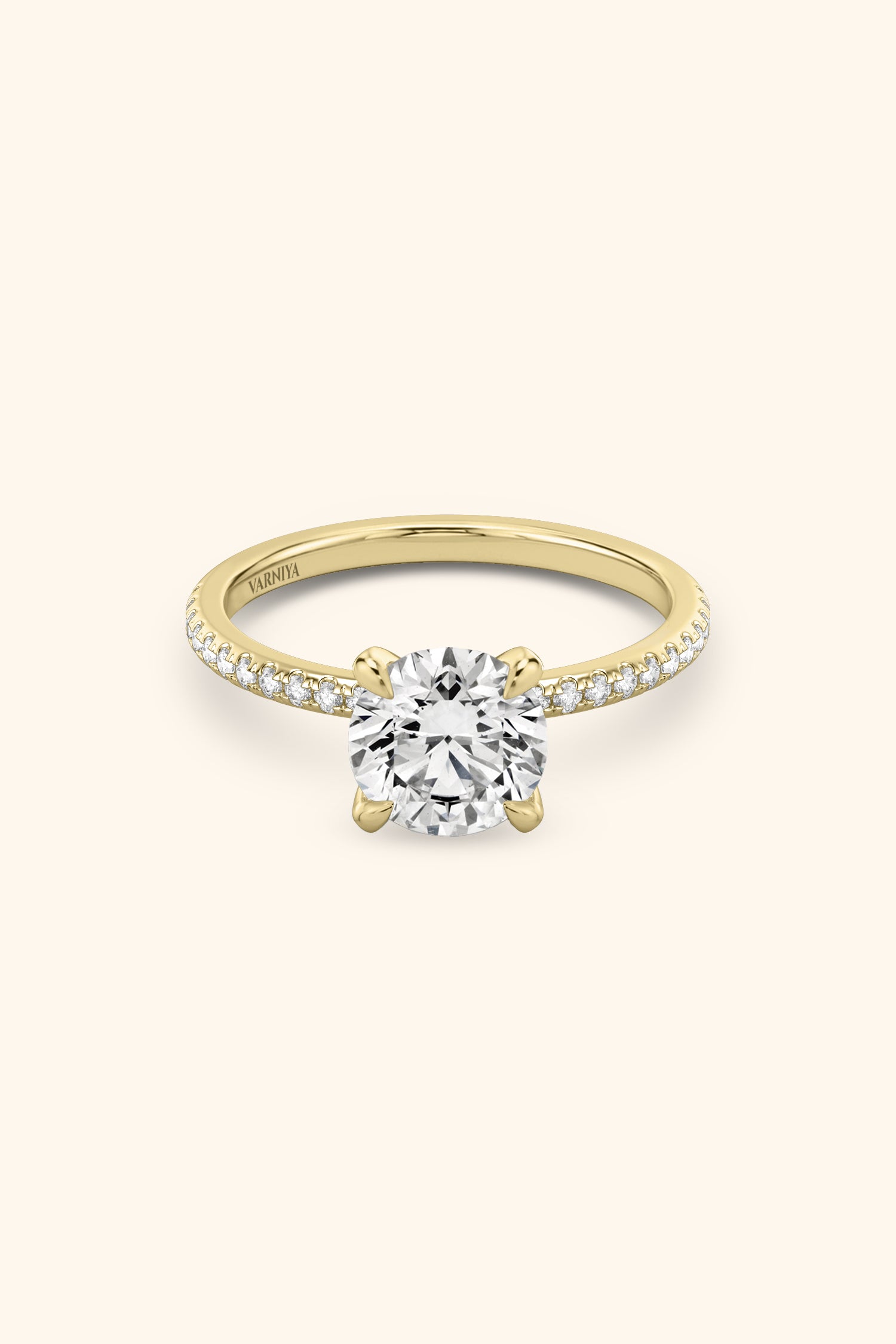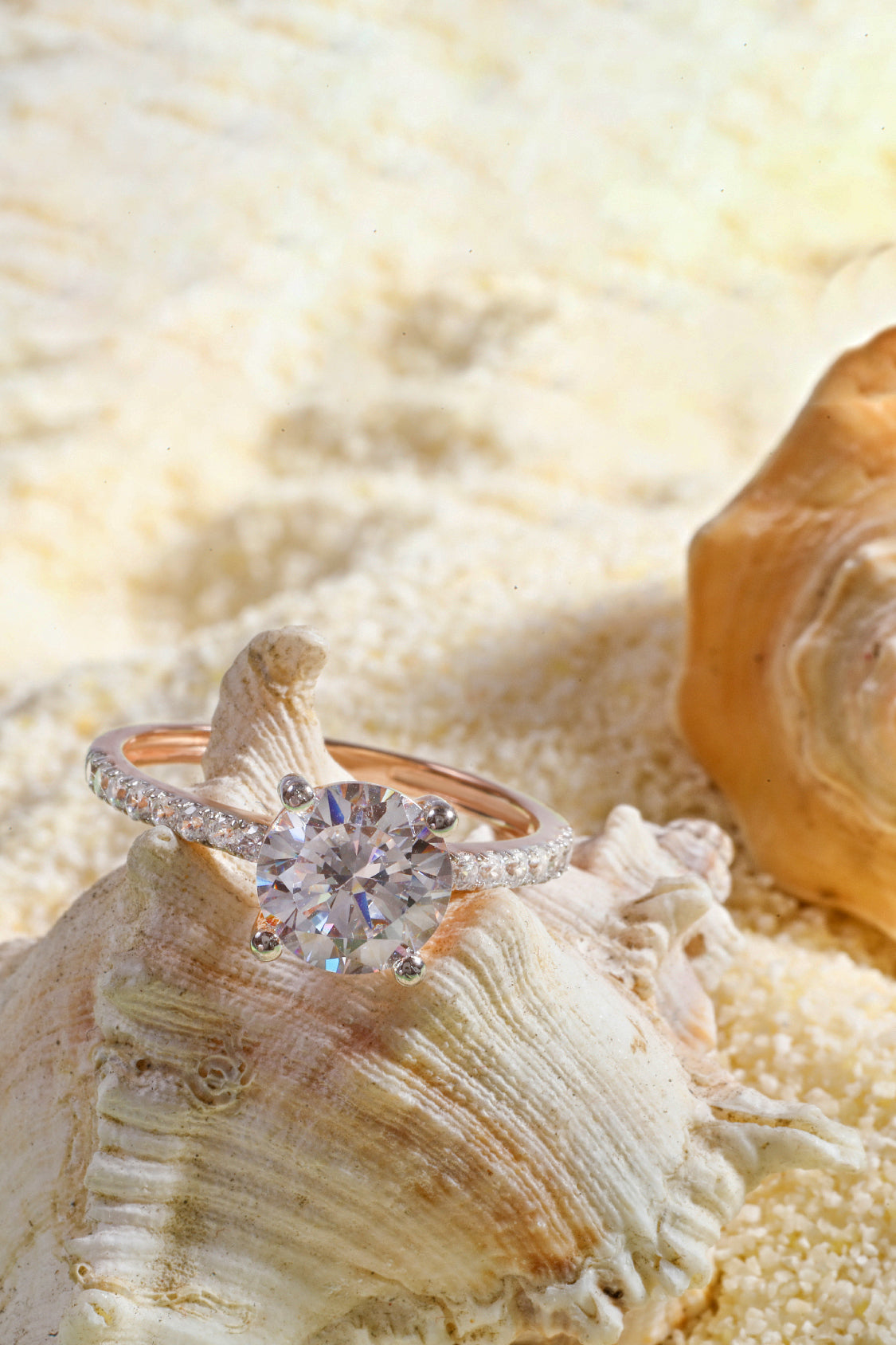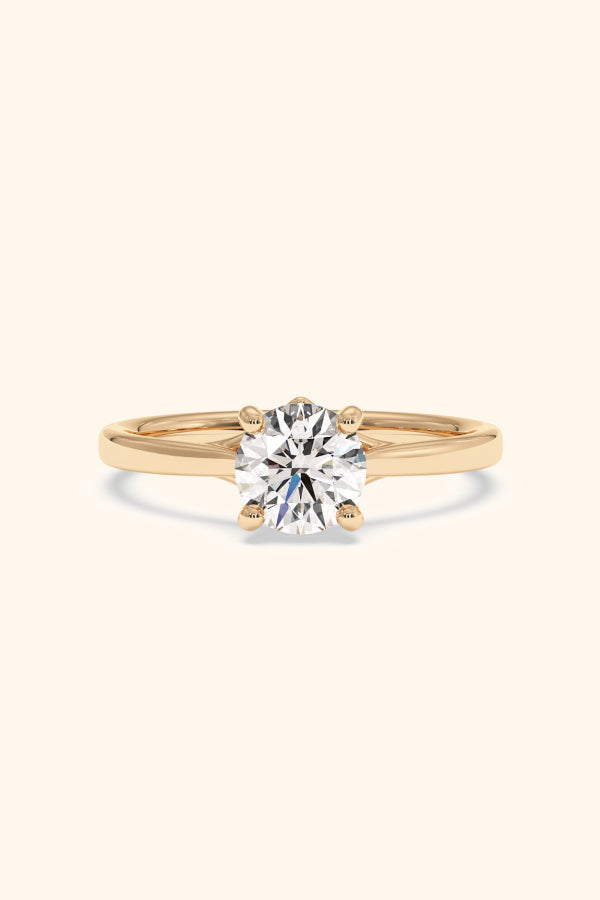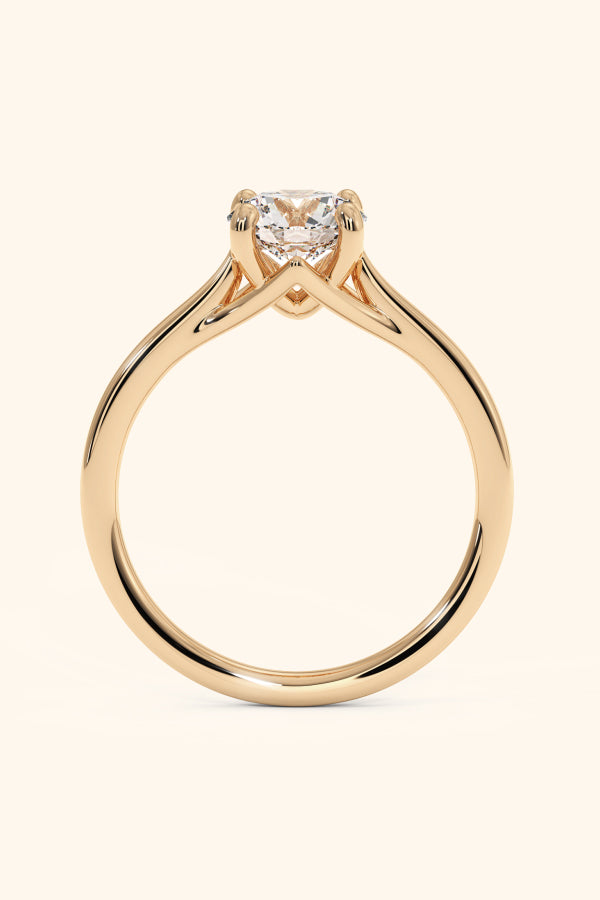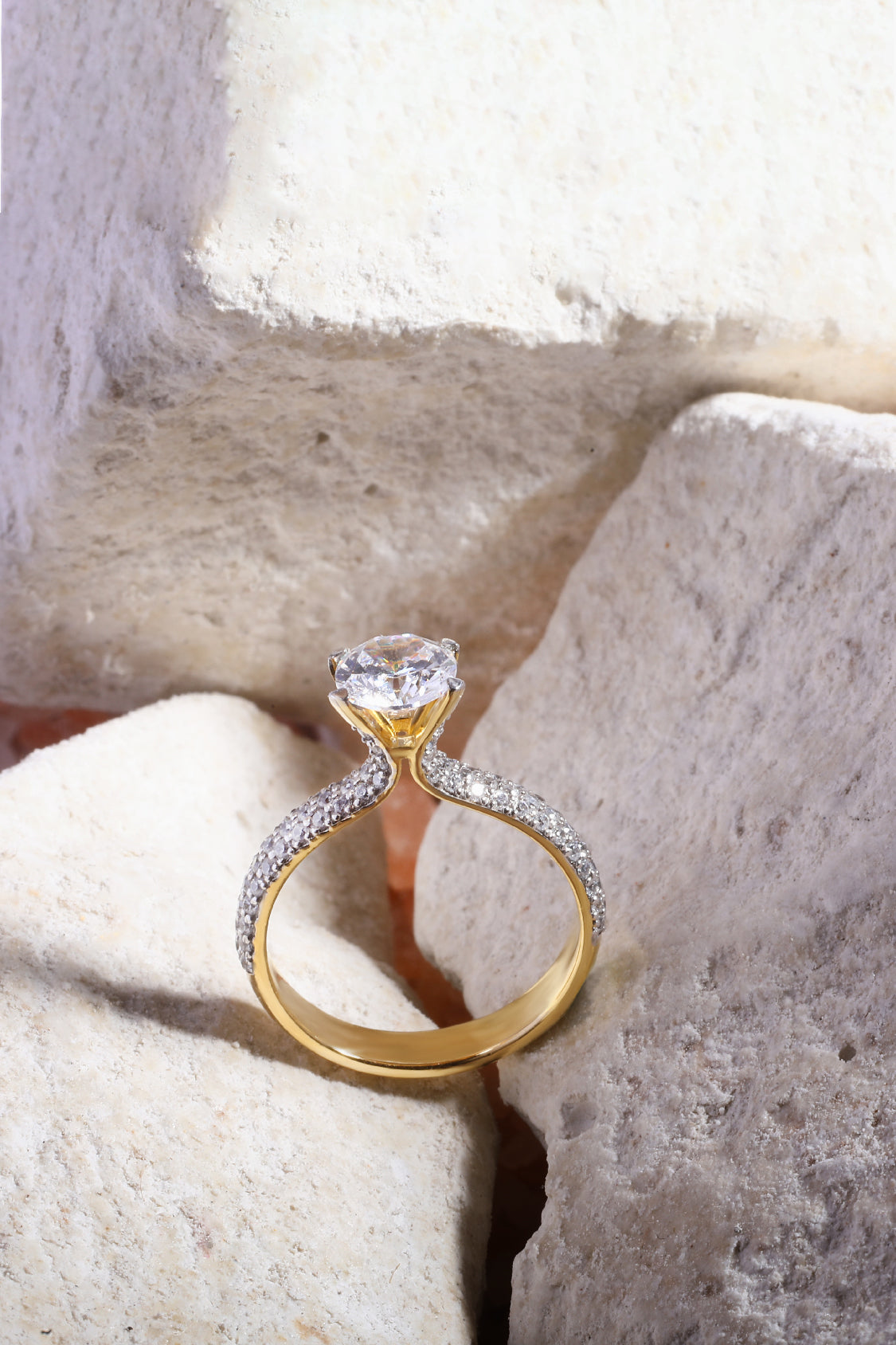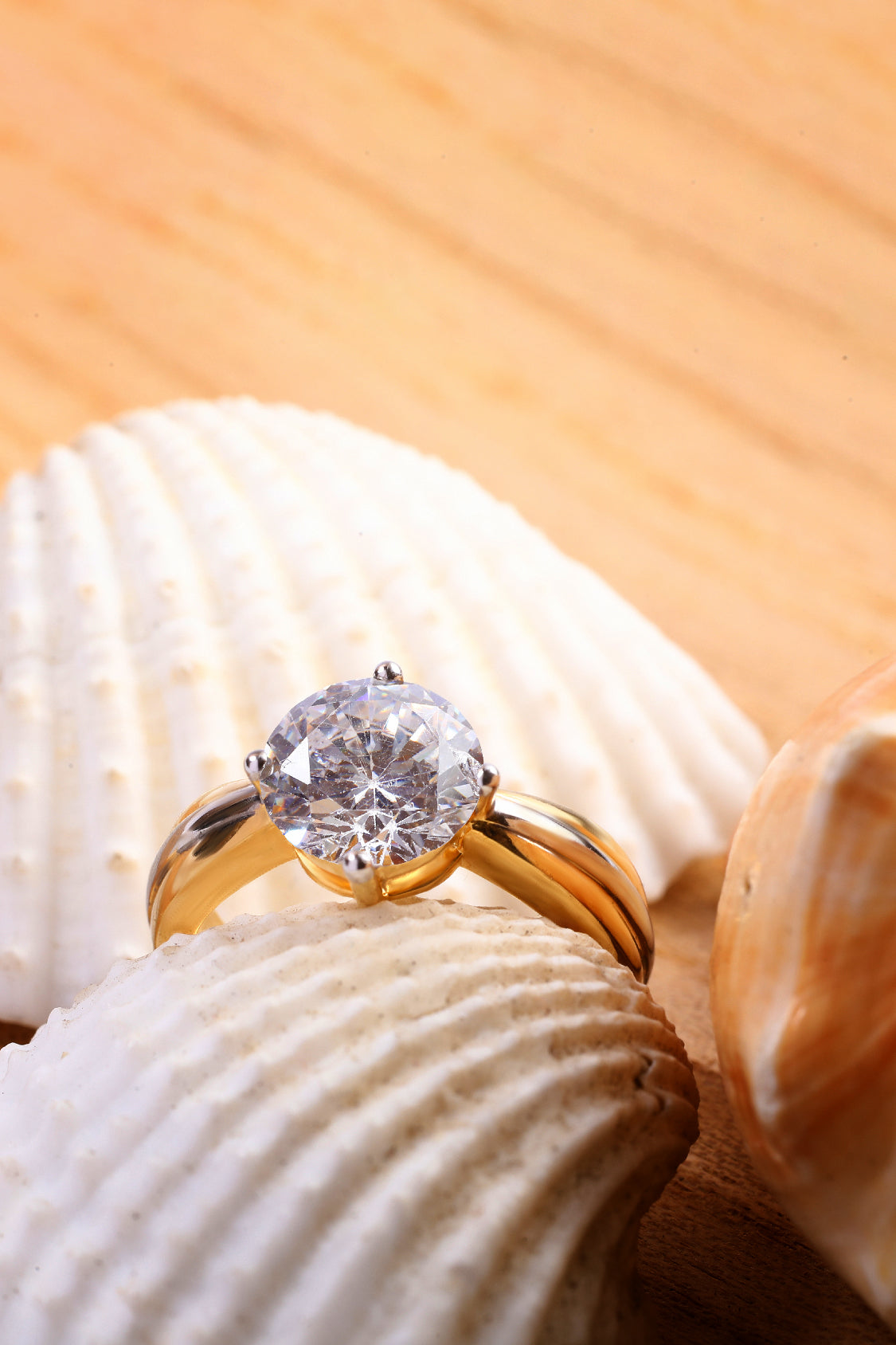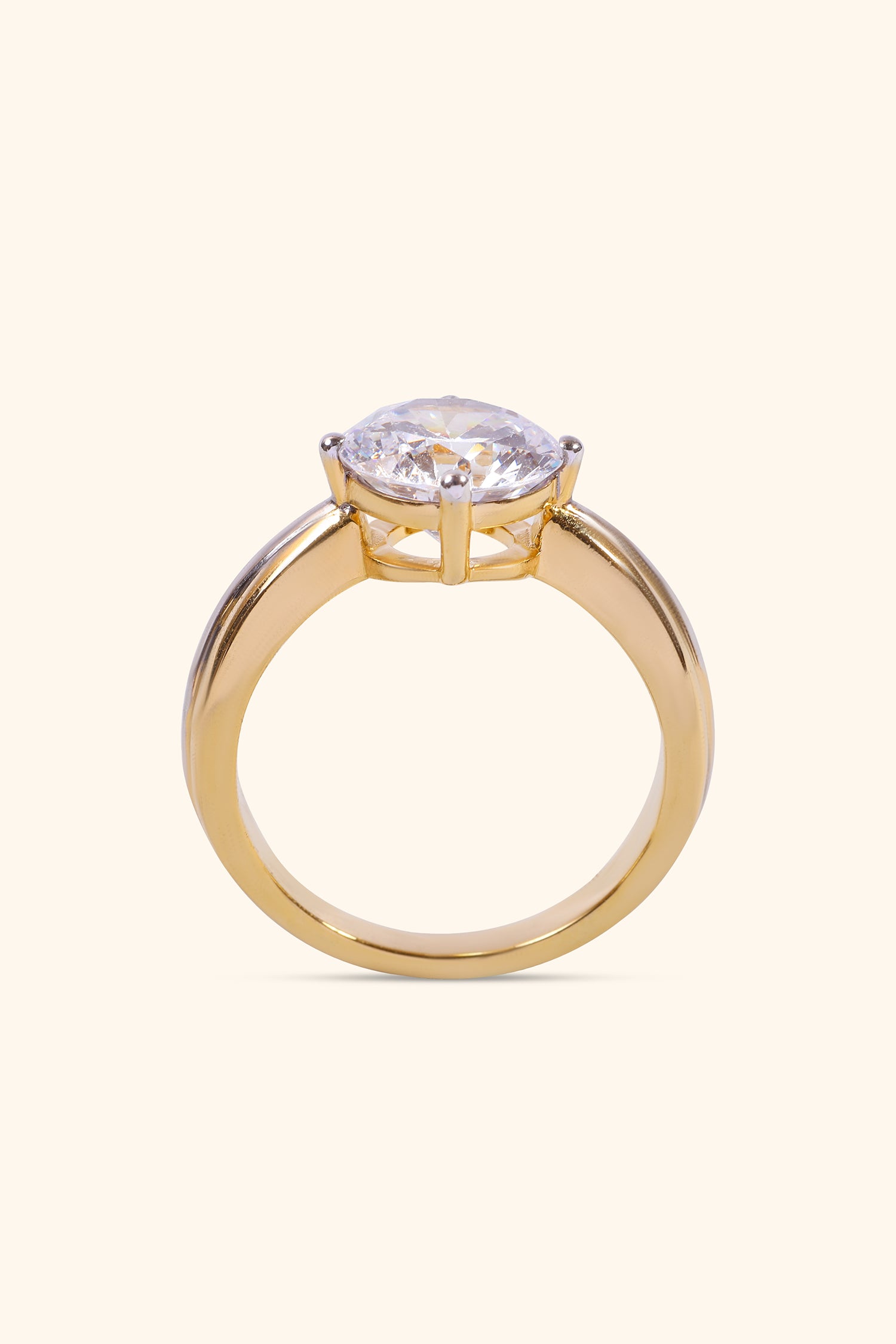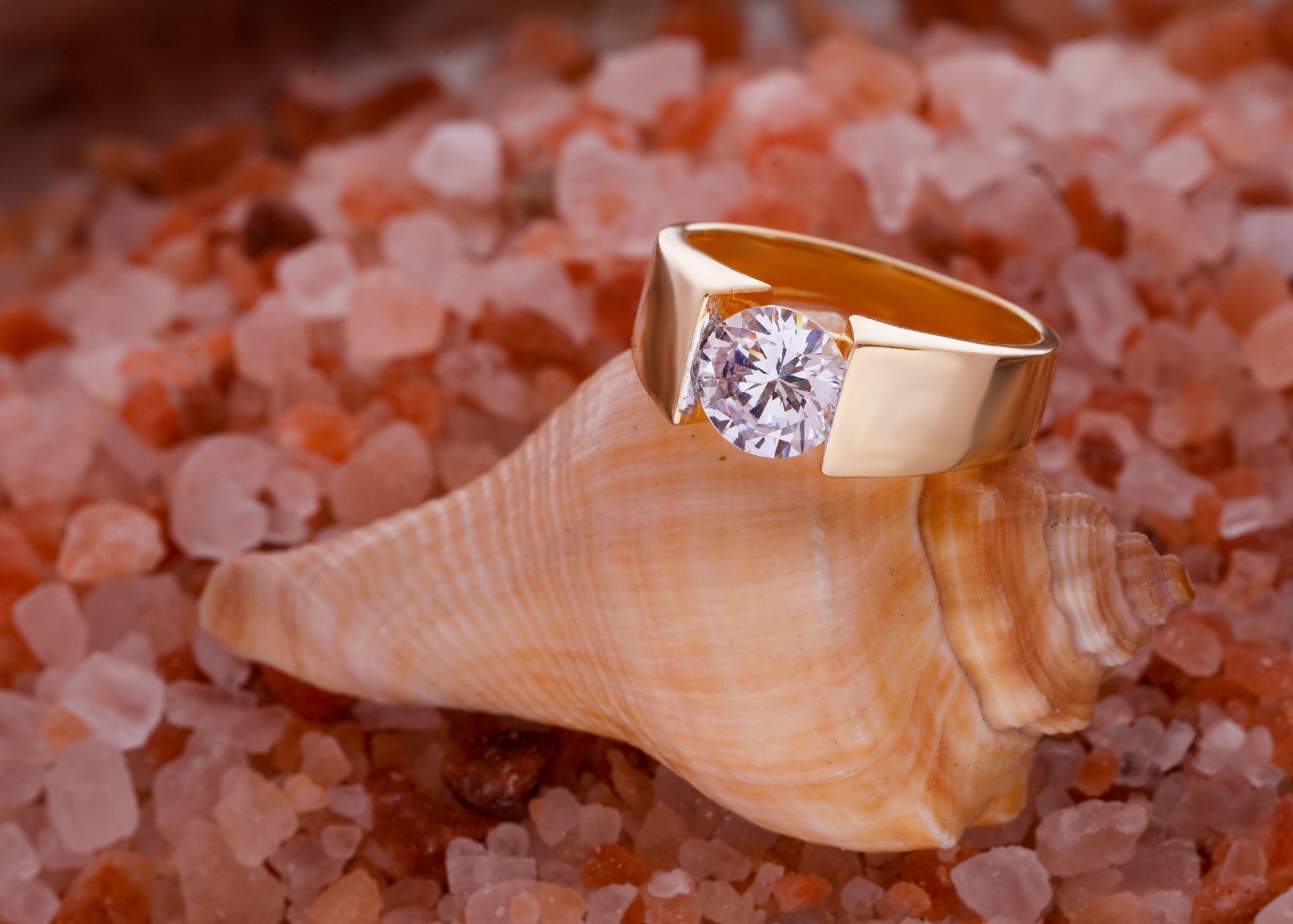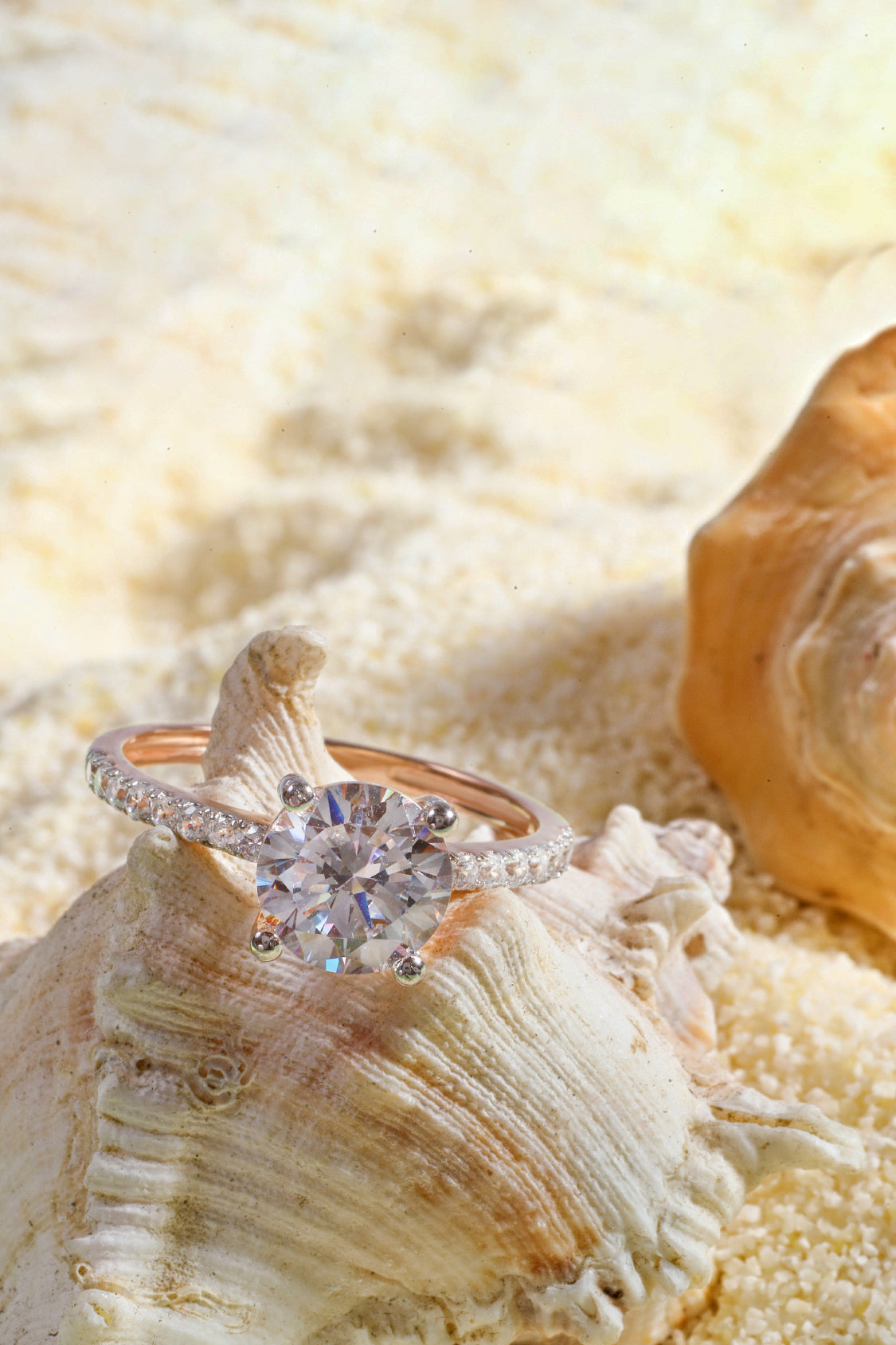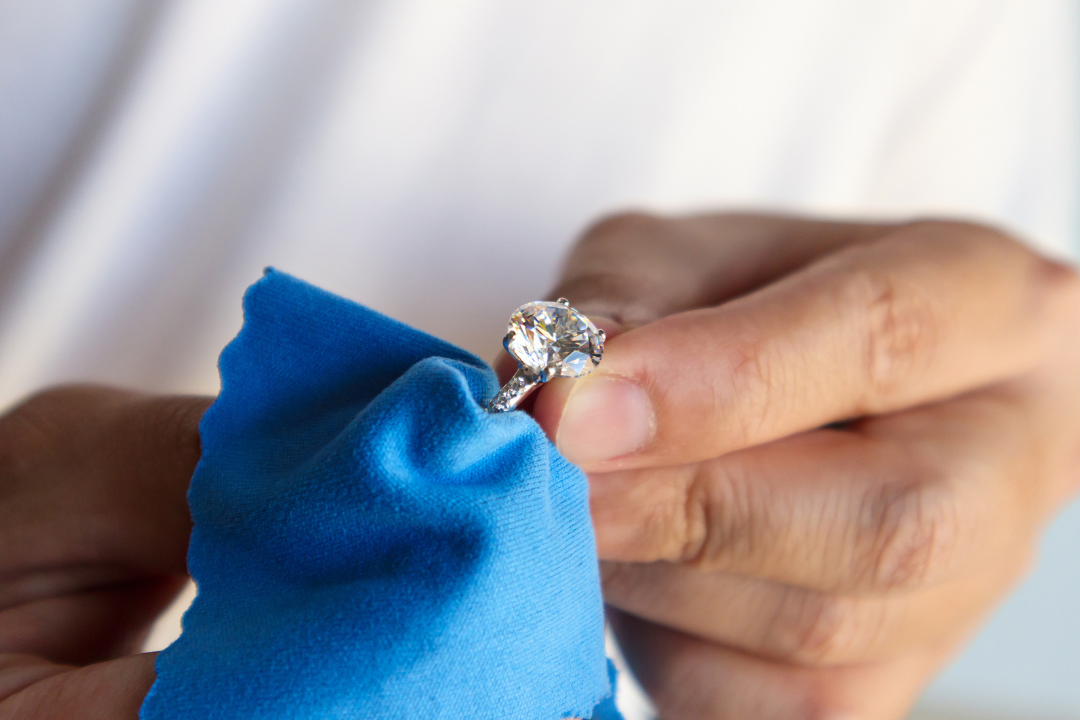
How to Clean Lab Grown Diamond Rings at Home: Safe and Easy Steps
Learn how to clean lab grown diamond rings at home with gentle, safe methods. Keep your ring sparkling without expensive tools or harsh chemicals!
The truth is, diamonds—yes, even lab grown diamonds—collect grime fast. In fact, according to the GIA, oils from your skin can dull a diamond’s shine in just a few days. To maintain their brilliance, it's advisable to clean lab grown diamond jewelry every two weeks for regular maintenance.
According to the Gemological Institute of America (GIA), everyday wear can leave your diamond jewelry dull and lifeless, losing up to 30% of its brilliance over time if not cleaned regularly.
Luckily, you don’t need expensive cleaners or a jeweler on speed dial. I'll show you safe, simple ways to clean your lab-grown diamond rings at home. Soaking your lab grown diamond jewelry in warm water with dish soap can help loosen dirt before scrubbing.
Trust me, your ring (and Instagram selfies) will thank you!
Why Cleaning Lab Grown Diamond Rings Matters
How Daily Wear Affects Diamond Jewelry
Let’s be real—you wear your ring when you’re cooking, cleaning, or typing. That’s what most people do. But these everyday actions expose your diamond jewelry to dirt, strong detergents, and rough surfaces.
Even using paper based products can leave scratches. Wearing your ring during hot tubs or while washing dishes? Not a good idea.
Water pressure and chemicals can hurt both your lab grown diamond and its setting. Additionally, lab grown diamonds should not be worn in chlorinated pools or hot tubs as chlorine can discolor the gold setting.
And while lab grown jewellery is a strong and affordable alternative to mined diamonds, it still needs proper care. To make your ring last for years, clean it every few months, and store it in a soft pouch or jewelry box when not in use. Avoid air drying lab grown diamonds as it may leave water spots.
Remember, the cleaner your diamond, the brighter it shines. Make cleaning a habit. Your engagement ring deserves it.
Want diamonds that shine with ethics and elegance? Discover Varniya’s lab-grown diamond collections—designed to dazzle and made for everyday wear.
Safe At-Home Methods to Clean Lab-Grown Diamond Rings
You don’t need fancy tools or a trip to the jeweler to keep your lab grown diamond ring clean. You just need a few items from your kitchen, a gentle touch, and about 10–15 minutes. Here’s exactly how to clean lab grown diamond rings the safe way—right at home.
1. Use a Bowl of Warm Water and Mild Dish Soap
-
Fill a small bowl with warm water. Make sure it’s not too hot.
-
Add a few drops of mild dish soap (not the strong kind used for greasy pans).
-
Drop your diamond ring into the mix and let it soak for about 15 minutes.
-
This helps loosen oil, lotion, and dust from everyday wear.
Tip: Never use harsh chemicals like bleach or ammonia. They can harm both the diamond jewelry and the metal setting.
2. Gently Scrub with a Soft Bristled Toothbrush
-
Take a soft bristled toothbrush or soft bristled toothbrush (yep, a kid’s toothbrush works well!).
-
Gently scrub around the diamond, prongs, and inside the band.
-
Don’t use too much pressure—this could cause leave scratches or damage precious stones.
Reminder: If you have a solid gold ring, go even softer. Gold is a soft metal.
3. Rinse Under a Stream of Lukewarm Water
-
Carefully hold the ring under lukewarm water to rinse off the soap.
-
Do this over a bowl or strainer—not the sink. You don’t want it falling down an open drain!
-
After rinsing, pat dry with a lint free cloth or let it go through air drying in a safe place. Rinse lab grown diamond jewelry thoroughly after cleaning to prevent soap residue.
4. Pat Dry with a Lint-Free Cloth
-
Use a lint free cloth to pat dry your ring gently. Don’t rub too hard.
-
Avoid paper based products like tissues or napkins. These can leave scratches on your diamond jewelry or its metal setting.
-
Microfiber cloths or cloths made for fine jewelry work best. They’re soft and leave no fuzz behind.
5. Air Dry in a Safe Spot
-
After patting it dry, let your ring go through air drying for a few minutes.
-
Place it on a clean, soft surface—like a soft pouch or towel—away from direct sunlight or extreme temperatures.
-
Never dry near an open drain or sink. It’s easy to lose your precious jewellery that way!
Personal Tip: I once almost lost a ring in the bathroom sink. Trust me—use a safe, dry space like your jewellery box or a closed container.
Deep Cleaning Solutions for Lab Diamonds: When Simple Isn’t Enough
1. Using Ultrasonic Cleaners Safely
-
Ultrasonic cleaners shake off dirt using sound waves. They’re great for reaching hidden spots around the diamond and metal setting.
-
These are best for sturdy rings—not delicate ones with loose stones or mixed materials.
-
Always read the machine’s manual before using. Don’t use it for rings with natural stones or glued parts.
Tip: Use warm (not hot) water and a little mild dish soap in the cleaner.
⚠️ Avoid using ultrasonic machines too often. Once every few months is enough.
2. White Vinegar Deep Clean (Occasional Use)
-
Mix white vinegar and warm water in a 1:1 ratio.
-
Soak your lab grown diamond ring for 10–15 minutes.
-
Rinse with cold water and pat dry with a soft cloth or lint free cloth.
Vinegar works well to remove soap film and oil. But use this only once in a while—it’s not for daily cleaning.
3. Baking Soda Paste for Grime Removal (Only for Solid Gold Settings)
-
Make a paste using baking soda and water (just a little).
-
Apply gently to the solid gold part of the ring. Don’t scrub the diamond itself!
-
Use a soft bristle brush or soft toothbrush to apply. Rinse and air dry afterward.
Why this works: Baking soda breaks down grime without harsh chemicals. It’s safe for gold but not for silver or platinum.
4. Use a Dedicated Jewelry Cleaning Foam
-
Jewelry cleaning foams are made for diamond jewelry, especially rings used for everyday wear.
-
They are gentle, non-toxic, and don’t rely on strong detergents or harsh chemicals.
-
Apply the foam, wait a few minutes, then use a soft brush or soft bristle brush to clean gently.
-
Rinse with cold water, then pat dry with a soft cloth.
In India, you can try gentle options like Connoisseurs Dazzle Stik, Bluestone’s Jewelry Cleaner, or Candere’s Care Kit—all designed for safe diamond cleaning at home.
5. Filtered Water Rinse for Final Polish
-
After any cleaning, rinse your lab grown diamond ring with filtered water or distilled water.
-
Why not tap water? It contains minerals that can leave spots, especially on precious stones or natural stones.
-
Finish with a light air drying or store it in safe storage like a jewelry box or soft pouch.
6. Avoid DIY Hacks That Cause Harm
Some hacks online can do more damage than good.
❌ Do NOT use:
-
Toothpaste – can leave scratches.
-
Lemon juice or vinegar soaks – too acidic for fine jewelry.
-
Boiling water – may affect metal setting or loosen prong tightness.
-
Bleach or ammonia – strong household cleaners that damage stones.
Bonus Method: Steam cleaning can be effective for tough buildup, but it should only be done by a professional jeweler to avoid damage.
Everyday Care for Lab Grown Diamond Jewelry
1. Avoid Wearing During Chores or Workouts
-
Take off your diamond ring before cleaning the house, washing dishes, or hitting the gym.
-
Household cleaners and sweat can dull the shine and damage the metal setting.
-
Scrubbing or lifting heavy things can also leave scratches or loosen prongs.
Experts Say: “We see a lot of ring damage from workout gear and cleaning tools,” says a professional jeweler in Los Angeles.
2. Protect from Heat and Light
-
Extreme temperatures and direct sun can harm both the diamond and the setting.
-
Over time, heat exposure may cause the metal to warp or prong tightness to weaken.
-
Keep your ring away from hot tools, hot tubs, and harsh lighting.
Pro Tip: Remove your jewelry when you're outside for long hours—especially in summer.
3. Apply Products Before Wearing
-
Lotions, perfumes, sunscreen, and hairspray can build up on your ring fast.
-
These leave residue that’s hard to clean and can dull your diamond jewelry.
-
Apply everything first, wait a minute, then put your ring on.
Save your best pieces for special occasions, and wear simple bands for messy tasks.
4. Store in a Soft Pouch or Jewelry Box
-
After you clean your lab grown diamond ring, don’t just toss it on the dresser.
-
Keep it in a soft pouch or lined jewelry box. This protects it from dust and scratches.
-
If you travel, use a pouch with padding or a case with piece separate compartments. Store lab grown diamonds in a soft fabric-lined jewelry box to protect against scratches.
Why it works: Diamonds can scratch other jewelry, even other diamonds. Keeping them apart protects your whole collection.
5. Avoid Stacking Rings Tightly
-
Stacking rings is trendy, but it’s not always safe.
-
Rings rubbing against each other can leave scratches, especially on the bands or edges.
-
If you love stacking, wear a thin spacer ring between them or save your stack for special occasions.
Quick Tip: Stacked rings should always be cleaned separately, especially if they’re made of different materials like natural stones or solid gold.
When to Choose Professional Help
Sometimes, home cleaning just doesn’t cut it—no matter how careful you are. If your lab grown diamond ring still looks dull or you notice damage, it’s time to call in a pro. Professional cleaning of lab grown diamond jewelry is recommended every six to twelve months for deeper cleaning.
Here’s how to know when you need professional cleaning or professional maintenance.
-
Your ring looks cloudy, even after using mild dish soap or a mild soap solution.
-
You notice loose prongs or a wobbly stone—this can affect prong tightness.
-
There are deep scratches or buildup under the stone that won’t budge.
-
You’re not sure what’s safe to use, and you want to avoid harsh chemicals. It is recommended to have lab grown diamond jewelry professionally inspected every six months.
FAQs About Cleaning Lab Grown Diamond Jewelry
1. Can I Use White Vinegar or Household Cleaners?
-
It’s best to avoid using household cleaners. Many have harsh chemicals that can damage the shine or loosen the setting on your lab grown diamond ring.
-
White vinegar can work—but only when diluted properly and used occasionally. It should never replace gentle cleaning methods like mild dish soap or a soft brush.
2. How Often Should I Clean My Engagement Ring or Diamond Ring?
-
If you wear your engagement ring or diamond ring daily, clean it at home once a week. For deep cleaning, go to a professional jeweler every 6 to 12 months.
-
Dirt, lotions, and oil from your hands build up fast. Regular care helps your diamond jewelry stay sparkly and avoids long-term damage.
3. Do Lab Grown Diamonds Need More Care Than Natural Stones?
-
Nope! Lab grown diamonds are just as hard and strong as natural stones.
-
The care steps are the same—gentle soap, warm water, and a soft toothbrush. But because they’re often worn for daily wear, routine maintenance helps keep them clean and safe.
4. What jewelry cleaner is good for lab grown diamonds?
-
Choose a non-toxic cleaner made for fine jewelry. Avoid products that list ammonia, bleach, or strong detergents.
-
Look for foaming cleaners or sprays labeled “safe for diamonds” or “gentle on settings.” You can also use a mild soap solution made at home.
-
If in doubt, always read the label—or better yet, ask your professional jeweler what they recommend.
Keeping your lab grown diamond ring clean isn’t hard—it just takes the right steps. With warm water, mild dish soap, and a little care, your ring can keep its sparkle for years. Skip the harsh chemicals and stick to safe, simple methods. And when in doubt, don’t hesitate to call a professional jeweler. A clean ring doesn’t just look good—it lasts longer. 💎
Looking for your forever sparkle? Browse Varniya’s curated lab-grown diamond styles—where brilliance meets conscience.”


